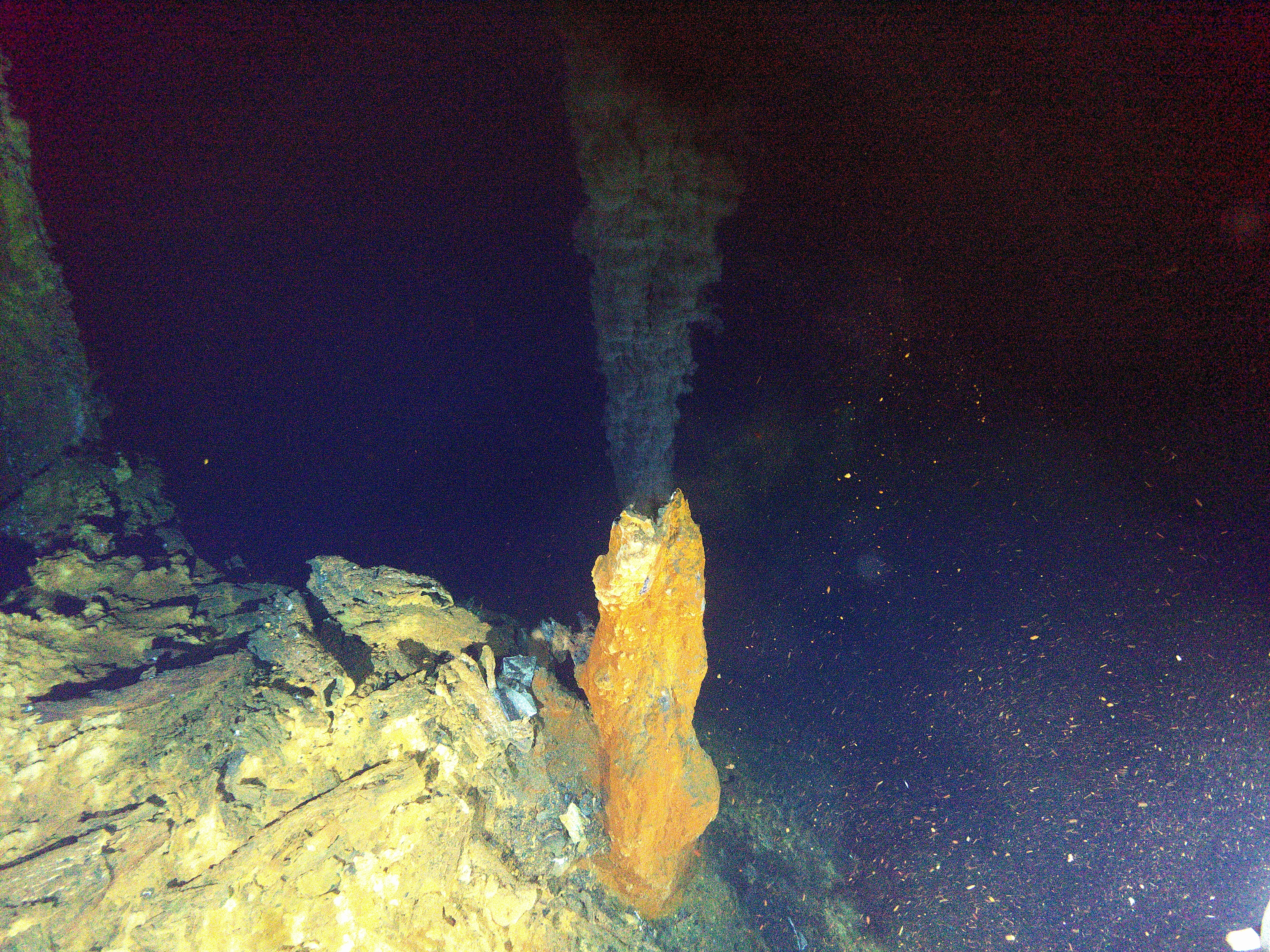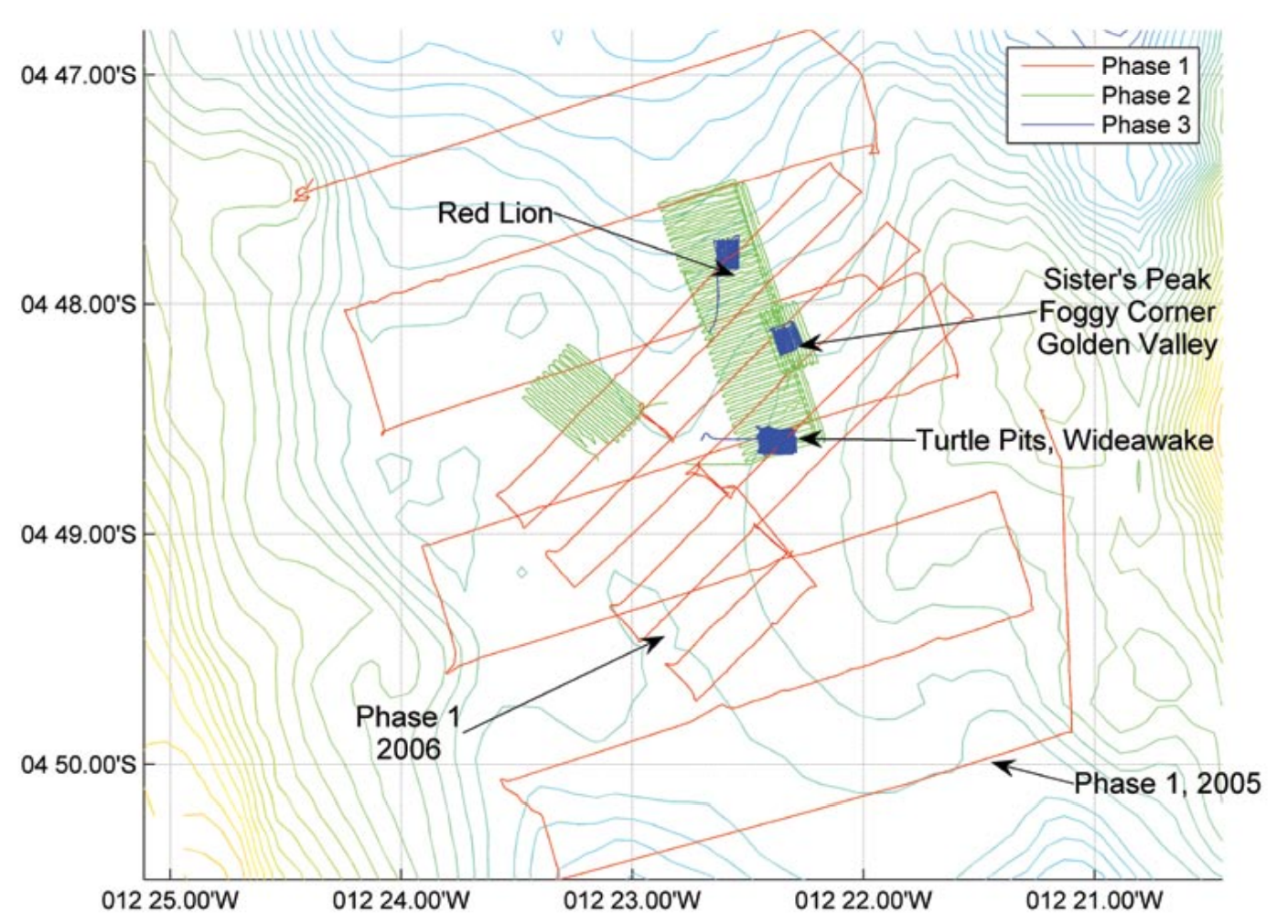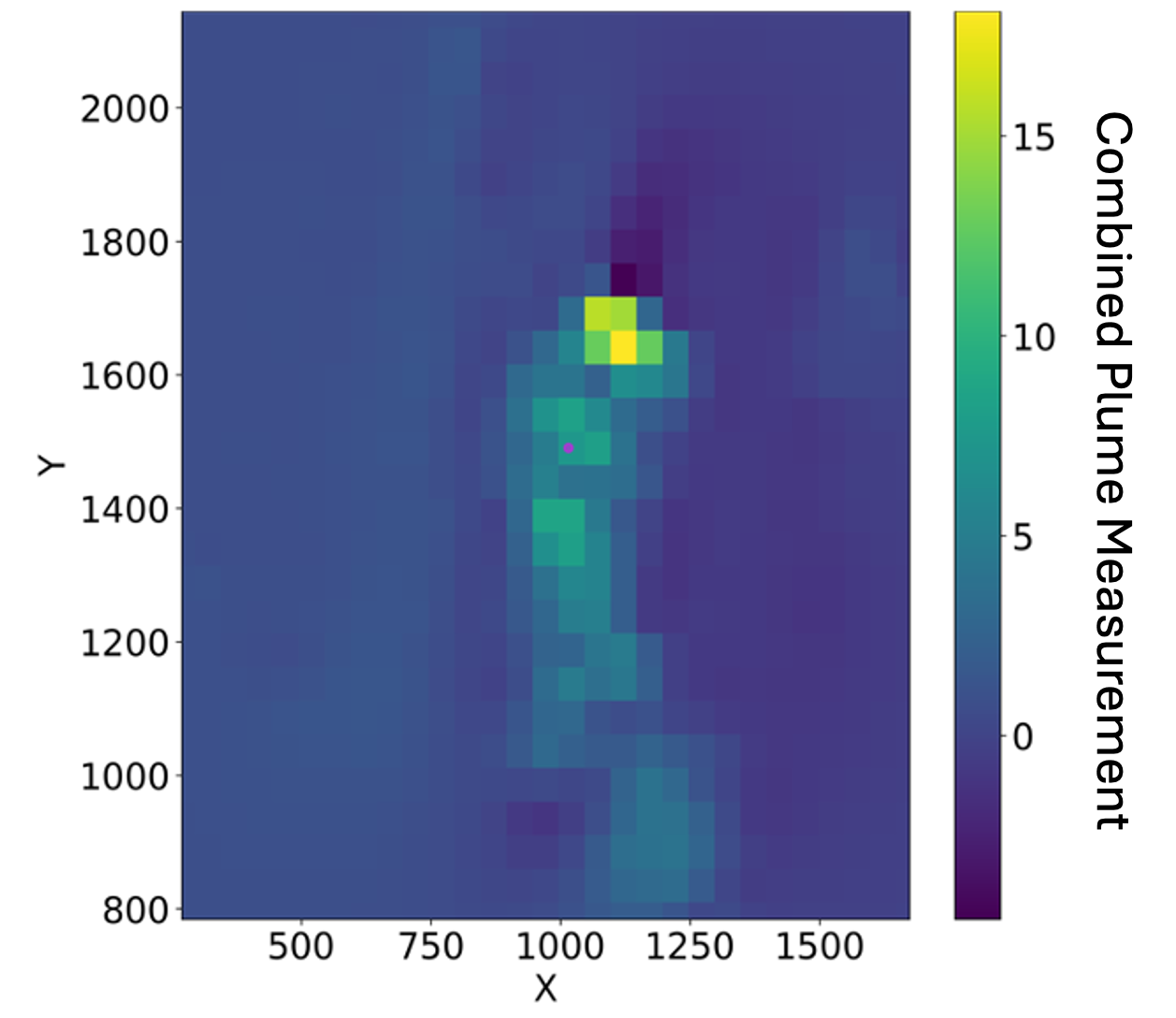Projects
Autonomous Exploration of Seafloor Fluid Flow

Black Smoker in the Aurora Vent Field, Gakkel Ridge; PS137 ALOIS Expedition, 2023.
Background
At least eight bodies in our solar system are thought to harbor liquid oceans. In some cases, such as Europa and Enceladus, this ocean is perhaps habitable and encased in an icy shell kilometers thick. To explore these worlds, new mission concepts must be developed using ice penetrating, submersible vehicles. While the vehicle would ideally travel hundreds of kilometers distant from a base station, the submersible would need to return to transfer data - with data subsequently relayed to an orbital platform for eventual return to Earth. Additionally, the radiation environment near the target body could preclude the use of an orbiting communication relay, instead relying on a relay in an eccentric Jovian orbit (in the case of Europa), increasing the time between communication windows from daily to monthly. Therefore, the submersible might be operating days or weeks without humans in the loop. The ability for the submersible to autonomously detect, locate, and study any scientific features of interest would significantly increase the potential science return for such a mission. We have a wealth of experience studying hydrothermal venting, thermoclines, ocean fronts, and other structures in Earth's oceans. While not all ocean processes on Earth are expected to recur on other Ocean Worlds distant from the sun, we can use this experience to develop technology necessary to the study of Ocean Worlds.Problem
Seafloor fluid flow, such as hydrothermal venting, is one scientific feature of particular interest. On Earth, these geological phenomena harbor unique ecosystems and are potentially critical to the origin of life. Similar vents on Ocean Worlds could be the best chance at extra-terrestrial life in our Solar System. In this project we focus on developing autonomous systems to detect, locate, and sample seafloor fluid flow. This work can be divided into two components.Water Column Search for Hydrothermal Vent Field Localization
Hydrothermal venting results in a hydrothermal plume that can be detected with multiple sensors, such as temperature, oxidation-reduction potential, optical backscatter, and methane, 10+ kilometers from the vent source. The current human-in-the-loop methods for localizing hydrothermal vent fields involves mapping this plume with repeated lawnmower surveys of increasingly smaller size and higher resolution. Each survey must be planned out by the scientists and operators based on data measurements from the previous surveys. In this project we look to develop an autonomous version of this approach to localize a hydrothermal vent field (often 100m by 100m or smaller) using water column surveys in the hydrothermal plume. After the vent field is localized, near seafloor search for individual sources of seafloor fluid flow can be done.
Example of the current multi-phase human-in-the-loop methods for hydrothermal vent field localization. These dives were completed by the Autonomous Benthic Explorer (ABE)
at the southern Mid-Atlantic Ridge in 2005 and 2006. Reproduced from Yoerger, Dana R., et al. "Mid-ocean ridge exploration with an autonomous underwater vehicle." Oceanography 20.4 (2007): 52-61. Figure 3, Under
the Creative Commons Attribution 4.0 International License.
Near Seafloor Search for Hydrothermal Vent Field Exploration
Once a hydrothermal field has been localized, near seafloor search (~5m altitude) can be conducted to further identify and sample individual sources of seafloor fluid flow. In this project we are developing autonomous methods for this using video, multi-beam sonar and scalar data measurements.
Artists rendering of near seafloor search for locating and sampling individual sources of seafloor fluid flow. Artist Credit: Natalie Renier, WHOI
Technology
To address the problem of water column search for the localization of a hydrothermal vent field, we have developed a fully autonomous search strategy based on the human-in-the-loop three-phase nested search commonly used in the field. Lawnmower surveys, targeting maxima in a given data measurement, of decreasing size and increasing resolution are performed to locate the plume source. In order to test this approach, a hydrothermal plume dispersion simulation was developed by Woods Hole Oceanographic Institution using FVCOM, an existing ocean circulation model. In these tests, a single data source binned at resolution equal to the surveys is used to determine the future survey locations. Ongoing work is investigating the use of Gaussian Process Regression to integrate multiple data sources into one metric to improve search quality.
Example of nested search plotting a simulated plume tracer with the source location at (0,0). The simulated vehicle performs repeated surveys of smaller size and higher resolution
until the vent source is found.

Data from oxidation-reduction potential, optical backscatter, and temperature, gridded with Gaussian Process Regression and combined into a single
measurement for use in autonomous hydrothermal vent field localization.
Impact
The development of autonomous capabilities for the localization and exploration of hydrothermal vent sites would improve the science return of a notional Ocean Worlds submersible mission by enabling the targeting of specific scientific features of interest. These capabilities also have application in Earth science by reducing the need for humans in the loop, allowing for more efficient use of ship time and enabling under ice exploration using AUVs.Status
Water Column Search for Hydrothermal Vent Field Localization
A field program to Karasik Seamount in the Arctic Ocean was completed in Fall 2016 to study and understand the human-in-the-loop approach to the localizing of hydrothermal vent fields using water column search. After this field program, an autonomous nested search method for hydrothermal venting was developed and tested in simulation using a hydrothermal plume dispersion model developed by Woods Hole Oceanographic Institution. In 2023, improved data processing methods for handling data from a heterogenous set of sensors (temperature, optical backscatter, oxidation-reduction potential, and methane) were developed and tested in a field program to the Endeavor Segment of Juan De Fuca Ridge.Near Seafloor Search for Hydrothermal Vent Field Exploration
In Summer 2023, a field program to the Aurora Vent Field on Gakkel Ridge in the Arctic Ocean was completed to study and understand the human-in-the-loop approach for near seafloor exploration of a hydrothermal vent field. In this field program, Woods Hole Oceanographic Institution's Nereid Under Ice (NUI) dove to the vent site and collected science and engineering data to be used for scientific study and in the development of autonomous capabilities. Based on this data, prototype methods for identifying hydrothermal plumes using image segmentation of video data and anomaly detection in scalar data have been developed.
Woods Hole Oceanographic Institution's Nereid Under Ice (NUI) vehicle being deployed at the Aurora Vent Site during PS137 in 2023.
Photo Credit: Chris German, © WHOI
Publications
Team
Jet Propulsion Laboratory, California Institute of TechnologySteve Chien
Andrew Branch
Kevin P. Hand
Andrew Klesh
Woods Hole Oceanographic Institute
Christopher R. German
Michael V. Jakuba
Molly Curran
Andrew D. Bowen
Jeffery S. Seewald
Applied Physical Laboratory, University of Washington
Guangyu Xu
John Hopkins University
Louis L. Whitcomb
Christopher McFarland
Lehigh University
Jill M. McDermott
Alfred Wegener Institute
Antje Boetius
Vera Schlindwein
University of Bremen
Wolfgang Bach
Sponsors
Planetary Science and Technology from Analog Research (PSTAR), National Aeronautics and Space Administration (NASA)Office of Ocean Exploration and Research, National Oceanic and Atmospheric Administration (NOAA)
